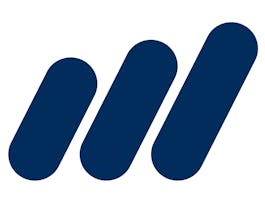When it comes to numbers, there is always more than meets the eye. In operational finance, you will learn how to read the “story” that the balance sheet and income statement tells about the company’s operations. The insights you gain from this “financial story” will then become a tool for short-term decision-making at the top management level relating to current assets, current liabilities and the management of working capital. Finally, by the end of the course you will understand the financial consequences of managerial decisions on operations, marketing, etc.



Finance for Managers
This course is part of multiple programs.

Instructor: Miguel Antón
Sponsored by BIDAcademy
41,485 already enrolled
(985 reviews)
Skills you'll gain
- Finance
- Financial Statement Analysis
- Financial Statements
- Management Accounting
- Financial Reporting
- Corporate Finance
- Operational Analysis
- Financial Analysis
- Accounting
- Budget Management
- Income Statement
- Financial Forecasting
- Accounts Payable and Receivable
- Financial Accounting
- Working Capital
- General Finance
- Profit and Loss (P&L) Management
- Financial Management
- Balance Sheet
- Corporate Accounting
Details to know

Add to your LinkedIn profile
4 assignments
See how employees at top companies are mastering in-demand skills

Build your subject-matter expertise
- Learn new concepts from industry experts
- Gain a foundational understanding of a subject or tool
- Develop job-relevant skills with hands-on projects
- Earn a shareable career certificate


Earn a career certificate
Add this credential to your LinkedIn profile, resume, or CV
Share it on social media and in your performance review

There are 4 modules in this course
Welcome to Operational Finance: Finance for Managers. In this course you will learn the basics of operational finance to help you make sound financial decision or to run a robust business! Before you get started with this week's video content, please have a look at the course syllabus. In this first week, we'll discuss what operational finance is all about by looking at a business case. What do the numbers on the Balance Sheet and P&L Statement tell us about its performance and future prospects? If you were a bank, would you approve a half million euro loan for this business? Why or why not? Course objective: To get an overview of operational finance and the types of analyses necessary to develop solid financing decisions.
What's included
16 videos7 readings1 assignment
In week 1, we looked at Polypanel’s Balance Sheet and P&L Statement. In the Balance Sheet, we noted that receivables increased from €188,000 in 2004 to €649,000 in 2007. We left off with the question: Is this difference due to an increase in sales or delays in payments from customers? In week 2, we will introduce operational ratios, the tools we need to disentangle both effects and understand what’s going on below the surface. We will also conduct a forecasting exercise of Polypanel to understand how well it will be positioned to pay back a potential credit line in the future. Objectives: By the end of the session you will understand the different types of operational ratios (Days of Collection, Days of Inventory and Days of Payables) in order to analyze how well a business is performing. You will also learn how to use forecasting to support financing decisions.
What's included
14 videos4 readings1 assignment
By now you have a pretty good grasp of the Polypanel case and the main issues that could impact future financing. This week, it’s time to roll up our sleeves and work out a diagnosis for these issues. We’ll discuss Need of Funds for Operations (NFO) and Working Capital (WC), two concepts that will help us better understand the company’s problems. Finally, with a solid diagnosis we can develop an action plan that will lead to sustainable growth. Objectives: By the end of the session you will have a framework for diagnosing a company’s financial health. You’ll also gain insights into how to develop an action plan to address its problems.
What's included
13 videos3 readings1 assignment
In this final week, we will introduce the final pieces of the puzzle to give you a complete overview of operational finance. We’ll discuss tools like sensitivity analysis that will help you consider the potential outcome of a decision given different variables. In this session we will also look at other crucial concerns for the firm and its shareholders like sustainable growth and ROE (Return On Equity) plus revisit NFO (Need of Funds for Operations) and other topics. Objectives: By the end of this session, you should have a complete overview of the key aspects of operational finance. You will also understand what tools financial professionals use in order to make decisions to strengthen a company’s position.
What's included
16 videos3 readings1 assignment1 peer review
Instructor

Offered by
Why people choose Coursera for their career




Learner reviews
985 reviews
- 5 stars
86.63%
- 4 stars
11.43%
- 3 stars
1.11%
- 2 stars
0.30%
- 1 star
0.50%
Showing 3 of 985
Reviewed on Jun 24, 2023
The course is very useful for beginners or those who graduated and forgot finance and accounting courses. Especially last part (assignment) makes you think more and do a real analysis.
Reviewed on Sep 30, 2016
This course allowed me to use the knowledge i gained from the previous course (accounting principles)
Reviewed on Jul 13, 2018
One of the best courses possible for a novice in Finance. It's been an honour studying under Prof. Anton. I recommend this course to all the future managers out there...
Recommended if you're interested in Business

University of Pennsylvania

Pontificia Universidad Católica de Chile

Starweaver

Corporate Finance Institute

Open new doors with Coursera Plus
Unlimited access to 10,000+ world-class courses, hands-on projects, and job-ready certificate programs - all included in your subscription
Advance your career with an online degree
Earn a degree from world-class universities - 100% online
Join over 3,400 global companies that choose Coursera for Business
Upskill your employees to excel in the digital economy


